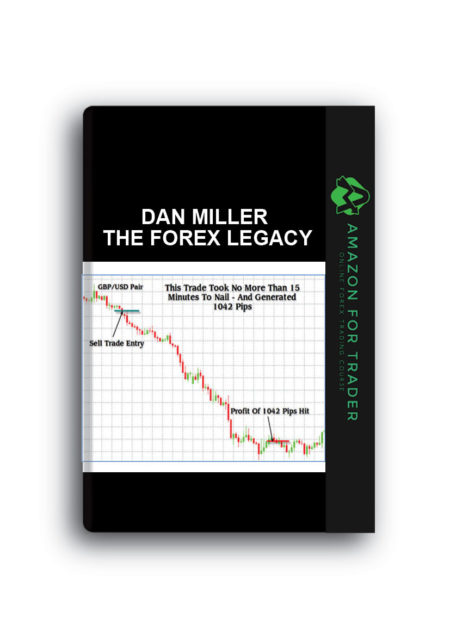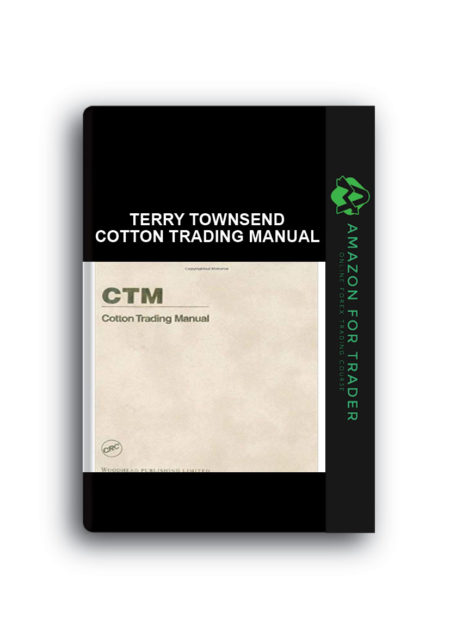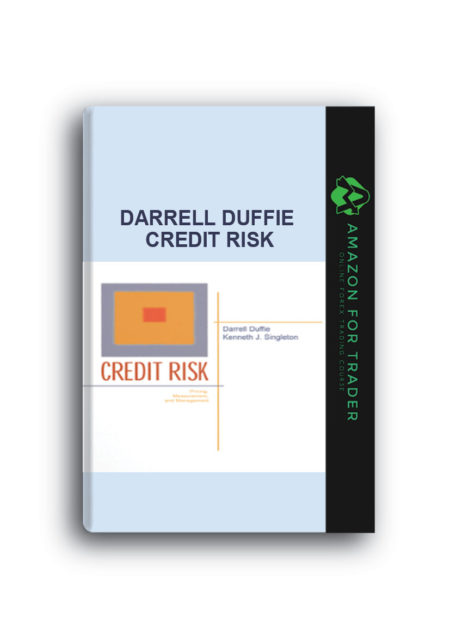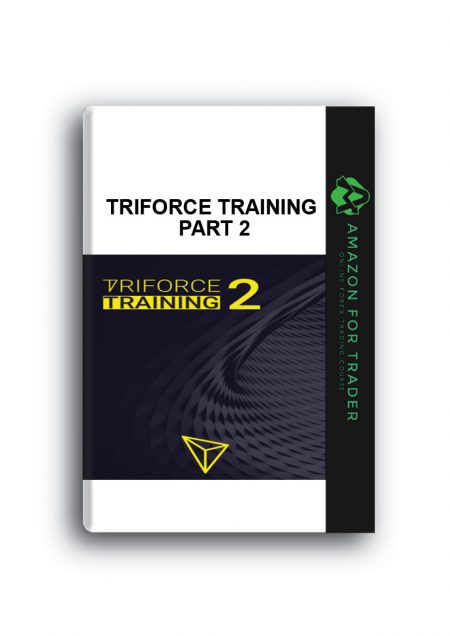Description
Harold Kerzner – Project Management
Description
The landmark project management reference, now in a new edition
Now in a Tenth Edition, this industry-leading project management “bible” aligns its streamlined approach to the latest release of the Project Management Institute’s Project Management Body of Knowledge (PMI’s PMBOK® Guide), the new mandatory source of training for the Project Management Professional (PMP®) Certificat-ion Exam. This outstanding edition gives students and professionals a profound understanding of project management with insights from one of the best-known and respected authorities on the subject.
From the intricate framework of organizational behavior and structure that can determine project success to the planning, scheduling, and controlling processes vital to effective project management, the new edition thoroughly covers every key component of the subject. This Tenth Edition features:
- New sections on scope changes, exiting a project, collective belief, and managing virtual teams
- More than twenty-five case studies, including a new case on the Iridium Project covering all aspects of project management
- 400 discussion questions
- More than 125 multiple-choice questions
Table of Contents
Preface.
-
OVERVIEW.
1.0 Introduction.
1.1 Understanding Project Management.
1.2 Defining Project Success.
1.3 The Project Manager-Line Manager Interface.
1.4 Defining the Project Manager’s Role.
1.5 Defining the Functional Manager’s Role.
1.6 Defining the Functional Employee’s Role.
1.7 Defining the Executive’s Role.
1.8 Working with Executives.
1.9 The Project Manager as the Planning Agent.
1.10 Project Champions.
1.11 The Downside of Project Management.
1.12 Project-Driven versus Non-Project-Driven Organizations.
1.13 Marketing in the Project-Driven Organization.
1.14 Classification of Projects.
1.15 Location of the Project Manager.
1.16 Differing Views of Project Management.
1.17 Concurrent Engineering: A Project Management Approach.
1.18 Studying Tips for the PMI® Project Management Certification Exam.
Problems.
Case Study.
Williams Machine Tool Company.
-
PROJECT MANAGEMENT GROWTH: CONCEPTS AND DEFINITIONS.
2.0 Introduction.
2.1 General Systems Management.
2.2 Project Management: 1945-1960.
2.3 Project Management: 1960-1985.
2.4 Project Management: 1985-2009.
2.5 Resistance to Change.
2.6 Systems, Programs, and Projects: A Definition.
2.7 Product versus Project Management: A Definition.
2.8 Maturity and Excellence: A Definition.
2.9 Informal Project Management: A Definition.
2.10 The Many Faces of Success.
2.11 The Many Faces of Failure.
2.12 The Stage-Gate Process.
2.13 Project Life Cycles.
2.14 Gate Review Meetings (Project Closure).
2.15 Project Management Methodologies: A Definition.
2.16 Organizational Change Management and Corporate Cultures.
2.17 Project Management Intellectual Property.
2.18 Systems Thinking.
2.19 Studying Tips for the PMI® Project Management Certification Exam.
Problems.
-
ORGANIZATIONAL STRUCTURES.
3.0 Introduction.
3.1 Organizational Work Flow.
3.2 Traditional (Classical) Organization.
3.3 Developing Work Integration Positions.
3.4 Line-Staff Organization (Project Coordinator).
3.5 Pure Product (Projectized) Organization.
3.6 Matrix Organizational Form.
3.7 Modification of Matrix Structures.
3.8 The Strong, Weak, Balanced Matrix.
3.9 Center for Project Management Expertise.
3.10 Matrix Layering.
3.11 Selecting the Organizational Form.
3.12 Structuring the Small Company.
3.13 Strategic Business Unit (SBU) Project Management.
3.14 Transitional Management.
3.15 Studying Tips for the PMI® Project Management Certification Exam.
Problems.
Case Study.
Jones and Shephard Accountants, Inc.
-
ORGANIZING AND STAFFING THE PROJECT OFFICE AND TEAM.
4.0 Introduction.
4.1 The Staffing Environment.
4.2 Selecting the Project Manager: An Executive Decision.
4.3 Skill Requirements for Project and Program Managers.
4.4 Special Cases in Project Manager Selection.
4.5 Selecting the Wrong Project Manager.
4.6 Next Generation Project Managers.
4.7 Duties and Job Descriptions.
4.8 The Organizational Staffing Process.
4.9 The Project Office.
4.10 The Functional Team.
4.11 The Project Organizational Chart.
4.12 Special Problems.
4.13 Selecting the Project Management Implementation Team.
4.14 Studying Tips for the PMI® Project Management Certification Exam.
Problems.
-
MANAGEMENT FUNCTIONS.
5.0 Introduction.
5.1 Controlling.
5.2 Directing.
5.3 Project Authority.
5.4 Interpersonal Influences.
5.5 Barriers to Project Team Development.
5.6 Suggestions for Handling the Newly Formed Team.
5.7 Team Building as an Ongoing Process.
5.8 Dysfunctions of a Team.
5.9 Leadership in a Project Environment.
5.10 Life-Cycle Leadership.
5.11 Organizational Impact.
5.12 Employee-Manager Problems.
5.13 Management Pitfalls.
5.14 Communications.
5.15 Project Review Meetings.
5.16 Project Management Bottlenecks.
5.17 Communication Traps.
5.18 Proverbs and Laws.
5.19 Human Behavior Education.
5.20 Management Policies and Procedures.
5.21 Studying Tips for the PMI® Project Management Certification Exam.
Problems.
Case Studies.
The Trophy Project.
Leadership Effectiveness (A).
Leadership Effectiveness (B).
Motivational Questionnaire.
-
MANAGEMENT OF YOUR TIME AND STRESS.
6.0 Introduction.
6.1 Understanding Time Management.
6.2 Time Robbers.
6.3 Time Management Forms.
6.4 Effective Time Management.
6.5 Stress and Burnout.
6.6 Studying Tips for the PMI® Project Management Certification Exam.
Problems.
Case Study.
The Reluctant Workers.
- CONFLICTS.
7.0 Introduction.
7.1 Objectives.
7.2 The Conflict Environment.
7.3 Conflict Resolution.
7.4 Understanding Superior, Subordinate, and Functional Conflicts.
7.5 The Management of Conflicts.
7.6 Conflict Resolution Modes.
7.7 Studying Tips for the PMI® Project Management Certification Exam.
Problems.
Case Studies.
Facilities Scheduling at Mayer Manufacturing.
Telestar International.
Handling Conflict in Project Management.
-
SPECIAL TOPICS.
8.0 Introduction.
8.1 Performance Measurement.
8.2 Financial Compensation and Rewards.
8.3 Critical issues with rewarding project teams.
8.4 Effective Project Management in the Small Business Organization.
8.5 Mega Projects.
8.6 Morality, Ethics, and the Corporate Culture.
8.7 Professional Responsibilities.
8.8 Internal Partnerships.
8.9 External Partnerships.
8.10 Training and Education.
8.11 Integrated Product/Project Teams.
8.12 Virtual Project Teams.
8.13 Breakthrough Projects.
8.14 Studying Tips for the PMI® Project Management Certification Exam.
Problems.
-
THE VARIABLES FOR SUCCESS.
9.0 Introduction.
9.1 Predicting Project Success.
9.2 Project Management Effectiveness.
9.3 Expectations.
9.4 Lessons Learned.
9.5 Understanding Best Practices.
9.6 Studying Tips for the PMI® Project Management Certification Exam.
Problems.
-
WORKING WITH EXECUTIVES.
10.0 Introduction.
10.1 The Project Sponsor.
10.2 Handling Disagreements with the Sponsor.
10.3 The Collective Belief.
10.4 The Exit Champion.
10.5 The In-House Representatives.
10.6 Studying Tips for the PMI® Project Management Certification Exam.
Problems.
Case Study.
Corwin Corporation.
-
PLANNING.
11.0 Introduction.
11.1 Validating the Assumptions.
11.2 General Planning.
11.3 Life-Cycle Phases.
11.4 Proposal Preparation.
11.5 Kickoff Meetings.
11.6 Understanding Participants’ Roles.
11.7 Project Planning.
11.8 The Statement of Work.
11.9 Project Specifications.
11.10 Milestone Schedules.
11.11 Work Breakdown Structure.
11.12 WBS Decomposition Problems.
11.13 Role of the Executive in Project Selection.
11.14 Role of the Executive in Planning.
11.15 The Planning Cycle.
11.16 Work Planning Authorization.
11.17 Why Do Plans Fail?
11.18 Stopping Projects.
11.19 Handling Project Phaseouts and Transfers.
11.20 Detailed Schedules and Charts.
11.21 Master Production Scheduling.
11.22 Project Plan.
11.23 Total Project Planning.
11.24 The Project Charter.
11.25 Management Control.
11.26 The Project Manager-Line Manager Interface.
11.27 Fast-Tracking.
11.28 Configuration Management.
11.29 Enter price project Management Methodologies.
11.30 Project Audits.
11.31 Studying Tips for the PMI® Project Management Certification Exam.
Problems.
-
NETWORK SCHEDULING TECHNIQUES.
12.0 Introduction.
12.1 Network Fundamentals.
12.2 Graphical Evaluation and Review Technique (GERT).
12.3 Dependencies.
12.4 Slack Time.
12.5 Network Replanning.
12.6 Estimating Activity Time.
12.7 Estimating Total Project Time.
12.8 Total PERT/CPM Planning.
12.9 Crash Times.
12.10 PERT/CPM Problem Areas.
12.11 Alternative PERT/CPM Models.
12.12 Precedence Networks.
12.13 Lag.
12.14 Scheduling Problems.
12.15 The Myths of Schedule Compression.
12.16 Understanding Project Management Software.
12.17 Software Features Offered.
12.18 Software Classification.
12.19 Implementation Problems.
12.20 Critical Chain.
12.21 Studying Tips for the PMI® Project Management Certification Exam.
Problems.
Case Study.
Crosby Manufacturing Corporation.
-
PROJECT GRAPHICS.
13.0 Introduction.
13.1 Customer Reporting.
13.2 Bar (Gantt) Chart.
13.3 Other Conventional Presentation Techniques.
13.4 Logic Diagrams/Networks.
13.5 Studying Tips for the PMI® Project Management Certification Exam.
Problems.
-
PRICING AND ESTIMATING.
14.0 Introduction.
14.1 Global Pricing Strategies.
14.2 Types of Estimates.
14.3 Pricing Process.
14.4 Organizational Input Requirements.
14.5 Labor Distributions.
14.6 Overhead Rates.
14.7 Materials/Support Costs.
14.8 Pricing Out the Work.
14.9 Smoothing Out Department Man-Hours.
14.10 The Pricing Review Procedure.
14.11 Systems Pricing.
14.12 Developing the Supporting/Backup Costs.
14.13 The Low-Bidder Dilemma.
14.14 Special Problems.
14.15 Estimating Pitfalls.
14.16 Estimating High-Risk Projects.
14.17 Project Risks.
14.18 The Disaster of Applying the 10 Percent Solution to Project Estimates.
14.19 Life-Cycle Costing (LCC).
14.20 Logistics Support.
14.21 Economic Project Selection Criteria: Capital Budgeting.
14.22 Payback Period.
14.23 The Time Value of Money.
14.24 Net Present Value (NPV).
14.25 Internal Rate of Return (IRR).
14.26 Comparing IRR, NPV, and Payback.
14.27 Risk Analysis.
14.28 Capital Rationing.
14.29 Project Financing.
14.30 Studying Tips for the PMI® Project Management Certification Exam.
Problems.
-
COST CONTROL.
15.0 Introduction.
15.1 Understanding Control.
15.2 The Operating Cycle.
15.3 Cost Account Codes.
15.4 Budgets.
15.5 The Earned Value Measurement System (EVMS).
15.6 Variance and Earned Value.
15.7 The Cost Baseline.
15.8 Justifying the Costs.
15.9 The Cost Overrun Dilemma.
15.10 Recording Material Costs Using Earned Value Measurement.
15.11 The Material Accounting Criterion.
15.12 Material Variances: Price and Usage.
15.13 Summary Variances.
15.14 Status Reporting.
15.15 Cost Control Problems.
15.16 Studying Tips for the PMI® Project Management Certification Exam.
Problems.
Case Studies.
The Bathtub Period.
Franklin Electronics.
Trouble in Paradise.
-
TRADE-OFF ANALYSIS IN A PROJECT ENVIRONMENT.
16.0 Introduction.
16.1 Methodology for Trade-off Analysis.
16.2 Contracts: Their Influence on Projects.
16.3 Industry Trade-off Preferences.
16.4 Conclusion.
16.5 Studying Tips for the PMI® Project Management Certification Exam.
-
RISK MANAGEMENT.
17.0 Introduction.
17.1 Definition of Risk.
17.2 Tolerance for Risk.
17.3 Definition of Risk Management.
17.4 Certainty, Risk, and Uncertainty.
17.5 Risk Management Process.
17.6 Plan Risk Management.
17.7 Risk Identification.
17.8 Risk Analysis.
17.9 Qualitative Risk Analysis.
17.10 Quantitative Risk Analysis.
17.11 Probability Distributions and The Monte Carlo Process.
17.12 Plan Risk Response.
17.13 Monitoring and Control Risks.
17.14 Some Implementation Considerations.
17.15 The Use of Lessons Learned.
17.16 Dependencies between Risks.
17.17 The Impact of Risk Handling Measures.
17.18 Risk and Concurrent Engineering.
17.19 Studying Tips for the PMI® Project Management Certification Exam.
Problems.
Case Studies.
Teloxy Engineering (A).
Teloxy Engineering (B).
-
LEARNING CURVES.
18.0 Introduction.
18.1 General Theory.
18.2 The Learning Curve Concept.
18.3 Graphic Representation.
18.4 Key Words Associated with Learning Curves.
18.5 The Cumulative Average Curve.
18.6 Sources of Experience.
18.7 Developing Slope Measures.
18.8 Unit Costs and Use of Midpoints.
18.9 Selection of Learning Curves.
18.10 Follow-on Orders.
18.11 Manufacturing Breaks.
18.12 Learning Curve Limitations.
18.13 Prices and Experience.
18.14 Competitive Weapon.
18.15 Studying Tips for the PMI® Project Management Certification Exam.
Problems.
-
CONTRACT MANAGEMENT.
19.0 Introduction.
19.1 Procurement.
19.2 Plan Procurement.
19.3 Conducting the Procurements.
19.4 Conduct Procurements Request Seller Responses.
19.5 Conduct Procurements Select Sellers.
19.6 Types of Contracts.
19.7 Incentive Contracts.
19.8 Contract Type versus Risk.
19.9 Contract Administration Cycle.
19.10 Contract Closure.
19.11 Using a Checklist.
19.12 Proposal-Contractual Interaction.
19.13 Summary.
19.14 Studying Tips for the PMI® Project Management Certification Exam.
-
QUALITY MANAGEMENT.
20.0 Introduction.
20.1 Definition of Quality.
20.2 The Quality Movement.
20.3 Comparison of the Quality Pioneers.
20.4 The Taguchi Approach.
20.5 The Malcolm Baldrige National Quality Award.
20.6 ISO 9000.
20.7 Quality Management Concepts.
20.8 The Cost of Quality.
20.9 The Seven Quality Control Tools.
20.10 Process Capability (CP).
20.11 Acceptance Sampling.
20.12 Implementing six sigma.
20.13 Lean six sigma and DMAIC.
20.14 Quality Leadership.
20.15 Responsibility for Quality.
20.16 Quality Circles.
20.17 Just-in-Time Manufacturing (JIT).
20.18 Total Quality Management (TQM).
20.19 Studying Tips for the PMI® Project Management Certification Exam.
-
MODERN DEVELOPMENTS PROJECT MANAGEMENT.
21.0 Introduction.
21.1 The Project Management Maturity Model (PMMM).
21.2 Developing Effective Procedural Documentation.
21.3 Project Management Methodologies.
21.4 Continuous Improvement.
21.5 Capacity Planning.
21.6 Competency Models.
21.7 Managing Multiple Projects.
21.8 End-of-Phase Review Meetings.
-
THE BUSINESS OF SCOPE CHANGES.
22.0 Introduction.
22.1 Need for Business Knowledge.
22.2 Timing of Scope Changes.
22.3 Business Need for a Scope Change.
22.4 Rationale for Not Approving a Scope Change.
-
THE PROJECT OFFICE.
23.0 Introduction.
23.1 Present-Day Project Office.
23.2 Implementation Risks.
23.3 Types of Project Offices.
23.4 Networking Project Management Offices.
23.5 Project Management Information Systems.
23.6 Dissemination of Information.
23.7 Mentoring.
23.8 Development of Standards and Templates.
23.9 Project Management Benchmarking.
23.10 Business Case Development.
23.11 Customized Training (Related to Project Management).
23.12 Managing Stakeholders.
23.13 Continuous Improvement.
23.14 Capacity Planning.
23.15 Risks of Using a Project Office.
-
MANAGING CRISIS PROJECTS.
24.0 Introduction.
24.1 Understanding Crisis Management.
24.2 Ford Verus Firetone.
24.3 The Air Frnce Concorde Crash.
24.4 Intel and the Pentium Chip.
24.5 The Russian Submarine, Kursk.
24.6 The Tylenol Poisonings.
24.7 Nestlés Marketting of Infant Formula.
24.8 The Space Shuttle Challenger Disaster.
24.9 The Space Shuttle Columbia Disaster.
24.10 Victims Verus Villains.
24.11 Life-Cycle Phases.
24.12 Project Management Implications.
-
THE RISE, FALL, AND RESURRECTION OF IRIDIUM: A PROJECT MANAGEMENT PERSPECTIVE.
25.0 Introduction.
25.1 Naming the Project “Iridium”.
25.2 Obtaining Executive Support.
25.3 Launching the Venture.
25.4 The Iridium System.
25.5 The Terrestial and Space-Based Network.
25.6 Project Initiation: Developing the Business Case.
25.7 The “Hiden” Business Case.
25.8 Risk Management.
25.9 The Collective Belief.
25.10 The Exit Champion.
25.11 Iridium’s Infancy Years.
25.12 Debt Financing.
25.13 The M-Star Project.
25.14 A New CEO.
25.15 Satellite Launches.
25.16 An Initial Public Offering (IPO).
25.17 Signing up Customers.
25.18 Iridium’s Rapid Ascent.
25.19 Iridium’s Rapid Descent.
25.20 The Iridium “Flu”.
25.21 Searching for a White Knight.
25.22 The Definition of Failure (October, 1999).
25.23 The Satellite Deorbiting Plan.
25.24 Iridium Is Rescued for $25 Million.
25.25 Epilogue.
25.26 Shareholder Lawsuits.
25.27 The Bankruptcy Court Ruling.
25.28 Autopsy.
25.29 Financial Impact of the Bankruptcy.
25.30 What Really Went Wrong?
25.31 Lessons Learned.
25.32 Conclusion.
Appendix A. Solutions to the Project Management Conflict Exercise.
Appendix B. Solution to Leadership Exercise.
Appendix C. Dorale Products Case Studies.
Appendix D. Solution to the Dorale Products Case Studies Answers.
Appendix E. Crosslisting of PMBOK® to the Ninth Edition.
Author Index.
Subject Index.
Author Information
Harold Kerzner, Ph.D., is Senior Executive Director for Project, Program and Portfolio Management at International Institute of Learning, Inc. (IIL), a global learning solutions company that conducts training for leading corporations throughout the world.
Harold Kerzner, Project Management, Download Project Management, Free Project Management, Project Management Torrent, Project Management Review, Project Management Groupbuy.


 T2 university-FX Pro Trader
T2 university-FX Pro Trader Mark McRae – Traders Secret Library
Mark McRae – Traders Secret Library






Reviews
There are no reviews yet.